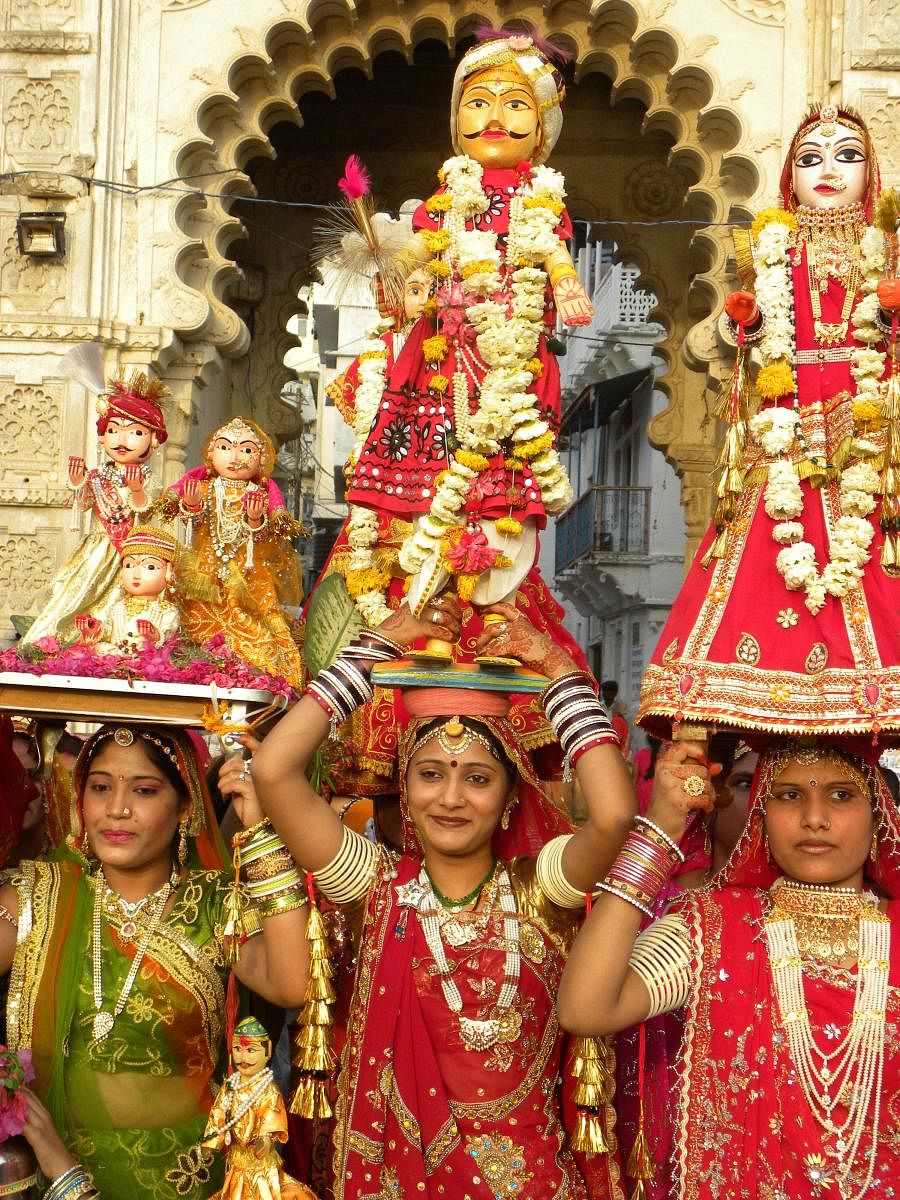
The colourful festival of Gangaur, celebrated in the honour of Goddess Gauri is best experienced in the romantic city of Udaipur. A visual feast by all means, the festival is marked by colourful dances, processions, devotional music and display of fireworks. This year though, with coronavirus, the festival is likely to be a low-key affair, but the rich heritage attached to it warrants more than just a mention.
The annual Mewar festival is a festival of spring or rituraj, the king of seasons. It marks the onset of spring and is celebrated in the month of Chaitra (March–April) since time immemorial. It coincides with the Gangaur festival and the festivities of the two events intermingle and immerse the whole city in vibrant colours, creating a spectacular ambience of mesmerising decorations. The bright traditional wear of the locals adds more charm and colour to the rich backdrop.
Gangaur celebrates the union of the ideal couple Shiva and Parvathi. In old days, men used to go out to far off places in search of a livelihood. Gangaur was one occasion when they returned to their homes. Gan is a synonym for Shiva. Gaur stands for Gauri — a manifestation of Goddess Parvathi and the consort of Lord Shiva.
Gangaur celebrates the union of the two and symbolises the conjugal love and saubhagya (marital bliss). According to local beliefs, goddess Parvathi returned to her parental home to bless her friends with marital bliss during this period. On the last day of her stay, her loved ones gave her a grand farewell. Gangaur ends on a happy note with the arrival of Shiva to escort his bride Gauri home.
Chaitra (March-April), the first month of the Hindu calendar, marks the end of winter and the onset of spring. Gangaur festival begins on the first day of Chaitra, the day following Holi and continues for 16 days and reaches its climax in the last three days.
The first important ritual of Gangaur is the collection of ashes from the remains of Holi fire. 16 balls are made from the ashes of the burnt material. Married women and young adolescent girls worship them for 16 days. Young girls carry earthen pots on their heads, with numerous holes in it, and a diya (earthen lamp) lit inside the pot. They go around from one house to another, singing hymns and collecting small presents like cash, sweets, jaggery, ghee, oil and so on. This ritual continues for the next 10 days after which the pot is broken.
Young girls adorn themselves in their best bandhini ghaghra-choli and chunris of vibrant shades and wear colourful bangles. Traditional sweets like ghewar are prepared in families and offered to the gods. Women bring clay and make deities of it. Married women decorate the idols with beautiful garments and jewellery to make them look like a real bride. Based on the garments, the idols are named as Chunri Gangaur, Gulabi Gangaur, Hariyali Gangaur and Kajari Gangaur. Women carry the decorated idols on their heads in a procession. Evenings teem with colourful shobha yatras (Gangaur processions) coming from different directions, winding their way through all major roads and streets of the city and culminating in a grand procession at the Gangaur Ghat. The procession is headed by a colourful pageantry of old palanquins, chariots, bullock carts and performing folk artistes. Colourfully bedecked elephants, camels, horses, bullock carts lead the grand procession. Enthusiastic performers sing, dance, make merry and join the procession, enjoying every moment of it. This procession is symbolic of Gauri returning to her husband’s (Shiva’s) home. After performing some rituals at the water body, the women perform ghoomar dance mounting the idols of Shiva and Parvathi on their heads. Offerings of mehendi, bangles, kajal, sindoor, fruits and sweets are made to the idols, and on the last day they are immersed in water. This year, the festival is best observed symbolically, but in its true spirit.